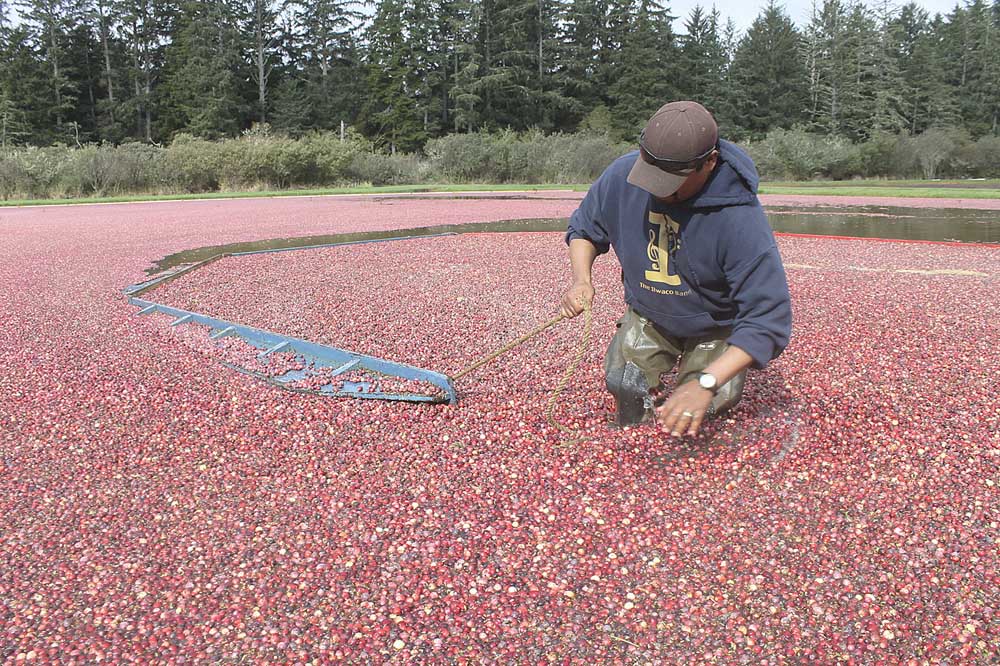Second round of cranberry cuts proposed by USDA
Published 4:58 am Monday, April 30, 2018

- Cranberries are harvested in Washington state on the Long Beach Peninsula.
The U.S. Department of Agriculture took a second whack Friday at reducing the cranberries piling up in cold storage and chilling grower returns.
Trending
The agency proposed a 25 percent reduction in the 2018 crop to help bring the supply of cranberries closer to demand. The proposal follows a USDA order, finalized in early April, to divert 15 percent of the 2017 crop from the U.S. market.
In both cases, the USDA is acting at the request of the industry’s Cranberry Marketing Committee. The committee, made up of farmers and handlers, reports that a growing surplus has driven prices below the cost of production for some growers.
The order will apply to some 1,100 growers and 65 handlers in 10 states, including Oregon and Washington.
Trending
“We’re just fighting with more fruit than is usable,” Washington cranberry farmer Malcolm McPhail said. “I think you just face the facts and do something about it.”
The cranberry supply has grown over the past half dozen years as U.S. farmers produced record crops and growers in other countries increased production, particularly in Canada. Meanwhile, consumption has been flat and is not influenced by lower consumer prices, according to USDA.
The marketing committee estimated last summer that after the 2017 crop was harvested, the surplus would reach 10.9 million barrels, or 115 percent of annual sales. A barrel equals 100 pounds.
USDA volume controls will not eliminate the surplus. The USDA estimated that diverting 15 percent of the 2017 harvest will reduce inventories by 1.1 million barrels. A 25 percent reduction in the 2018 crop would remove another 2 million barrels, according to the USDA.
Ocean Spray, a farmers’ cooperative that handles a majority of the cranberries grown in the U.S., supports the USDA proposal, a spokeswoman said.
Much of the surplus is juice concentrate, a byproduct of making sweetened dried cranberries. Handlers would be able to meet a portion of their withholding obligation by disposing of juice concentrate rather than whole fruit.
Grower allotments would be based on 75 percent of sales history. Organic cranberries, a small part of the market, would be exempt from volume controls. Also, handlers who take in fewer than 125,000 barrels would be exempt, as would handlers who have no carryover fruit and aren’t contributing to the surplus.
Cranberry farmers received an average of $23.50 per barrel in 2016, while the average cost of production was $30 a barrel, according to the marketing committee. The surplus grew from 4.6 million barrels in 2011 to 9.9 million in 2016.
The USDA will take comments on the proposal until May 29. Comments may be submitted online at regulations.gov.









